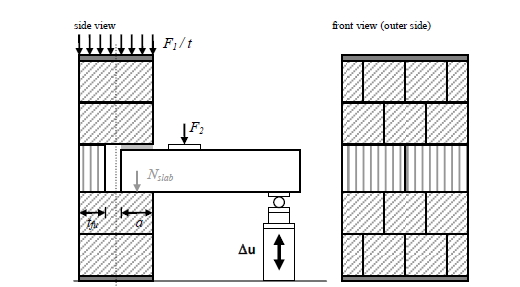1 Research Assistant, Chair of Structural Design, Faculty of Architecture, Technische Universität Dresden, 01062, Dresden, Germany, lehrstuhl.tragwerksplanung@tu-dresden.de
2 Professor, Chair of Structural Design, Faculty of Architecture, Technische Universität Dresden, 01062, Dresden, Germany,
lehrstuhl.tragwerksplanung@tu-dresden.de
ABSTRACT
In the context of the increasing requirements for thermal protection and energy efficiency, particular attention has to be paid to the connection of the slab to the monolithic wall. Usual constructions (bearing length corresponds to half wall thickness) do not meet the risen (and still rising) energy and heat insulation demands. Therefore, a thermal optimization of the wall-slab-connection is required, which is carried out by means of a significant reduction of the bearing length of the slab.
Recently, an investigation on the consequences of such a reduction is carried out at the Chair of Structural Design at TU Dresden. In the framework of the project, the effects of the reduction of the bearing length on the stability and usability of a system and the failure of partially supported slabs in the ultimate limit state are to be investigated. Furthermore, the contribution of the facing unit to the load transfer is to be analyzed. Based on an evaluation of different geometry and material combinations of the joint between the wall and the floor, the structural-physical requirements on the materials were specified. In addition, the boundary conditions and the general objectives for the structural analysis were defined.
Using experimental tests and numerical simulations, the process of fracture of the wall-slab-connection in case of failure is to be analyzed subsequently. Based on the real material and structural behaviour, a suitable model for the structural analysis of partially supported slabs will be developed, which allows for the reliable structural design of various bearing lengths.
KEYWORDS: masonry, passive house, partially supported slabs, thermal bridges
417.pdf



